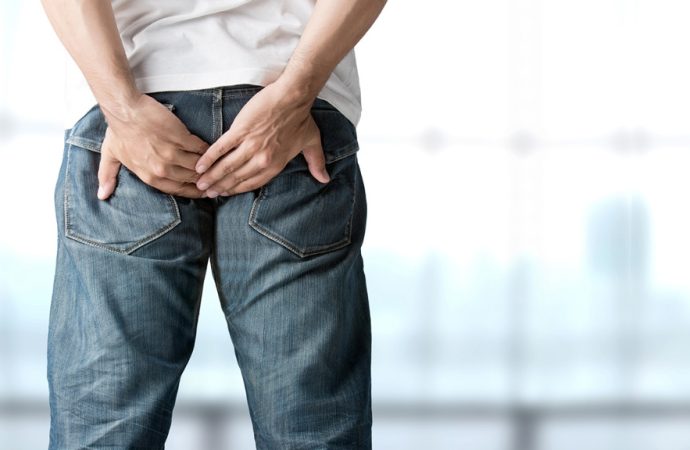Introduction: Pilonidal cysts, though not widely known, can be a source of significant discomfort. Nestled near the tailbone at the top of the buttocks, these cysts often contain hair and skin debris. This comprehensive guide aims to shed light on the causes, symptoms, treatment options, and prevention strategies associated with pilonidal cysts. Causes of Pilonidal
Introduction:
Pilonidal cysts, though not widely known, can be a source of significant discomfort. Nestled near the tailbone at the top of the buttocks, these cysts often contain hair and skin debris. This comprehensive guide aims to shed light on the causes, symptoms, treatment options, and prevention strategies associated with pilonidal cysts.
Causes of Pilonidal Cysts:
Understanding the origins of pilonidal cysts is essential for effective management. Loose hairs, often a result of friction, tight clothing, cycling, or prolonged periods of sitting, can puncture the skin. The body, in response to this intrusion, forms a cyst around the trapped hair. Interestingly, individuals involved in grooming animals or hair-cutting activities may develop cysts in unique locations.
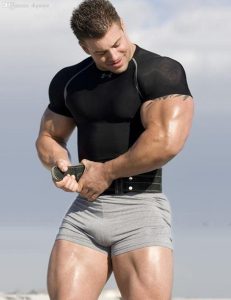
Image by: yendex.com
Symptoms and Recognition:
While some pilonidal cysts may remain asymptomatic, others, when infected, manifest clear signs. Recognition of these symptoms is crucial for timely intervention. Key indicators include:
- A pit near the top of the buttocks crease.
- Pain, often accompanied by swelling.
- Inflamed and swollen skin around the cyst.
- Pus or blood leaking from an opening in the skin.
- An unpleasant odor emanating from draining pus.
The presence of these symptoms should prompt individuals to seek prompt medical attention for accurate diagnosis and appropriate intervention.
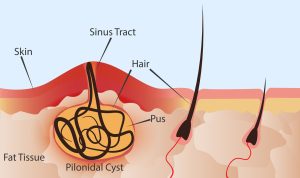
Image by: yendex.com
Detailed Symptoms:
- Pit Formation: A distinct pit or dimple near the top of the buttocks crease is a characteristic sign of a pilonidal cyst.
- Pain: Infected cysts can cause localized pain, often aggravated by movement or pressure.
- Swelling: The skin surrounding the cyst may become inflamed and swollen, contributing to the overall discomfort.
- Drainage: Pus or blood may leak from an opening in the skin, indicating an infected cyst.
- Odor: An unpleasant smell may be present due to the drainage of pus.
Risk Factors:
Certain factors increase the likelihood of developing pilonidal cysts. These include:
- Demographics: Young adult white males are more susceptible.
- Weight: Being overweight is a risk factor.
- Lifestyle: Individuals with sedentary habits or those who sit for extended periods face an elevated risk.
- Hair Characteristics: Thick, stiff body hair increases the chances of hair penetration and cyst formation.
Understanding these risk factors can aid in proactive measures to prevent the occurrence of pilonidal cysts.
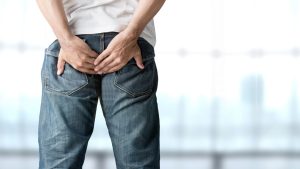
Image by: yendex.com
Complications and Long-Term Risks:
While pilonidal cysts can be a one-time occurrence for some, others may experience recurrent infections. Without appropriate treatment, individuals may face a heightened risk of squamous cell carcinoma, a type of skin cancer. Recognizing and addressing complications promptly is crucial to prevent long-term health risks.
Treatment Options:
The approach to treating pilonidal cysts varies based on the severity of the condition. In mild cases, drainage of the cyst through a small incision in the skin may suffice. However, more severe or recurrent cases may necessitate surgical intervention. Consulting with a healthcare professional is essential to determine the most suitable course of action for each individual.
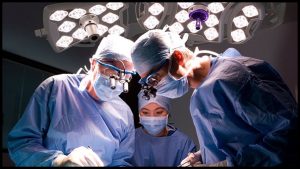
Image by: yendex.com
Prevention Strategies:
Proactive measures can significantly reduce the risk of developing pilonidal cysts. Incorporating the following strategies into one’s routine can be beneficial:
- Hygiene Practices: Regular washing of the affected area can minimize the risk of infection.
- Weight Management: Maintaining a healthy weight reduces the pressure on the tailbone region.
- Avoiding Prolonged Sitting: Taking breaks and avoiding prolonged periods of sitting can alleviate friction and pressure on the affected area. Treatment for other health problems
- Hair Removal: For individuals with a history of pilonidal cysts, regular shaving or the use of hair removal products can decrease the likelihood of recurrence.

Photo by: unsplash.com
Conclusion:
Pilonidal cysts, though not widely discussed, can significantly impact one’s quality of life. Recognizing the symptoms, understanding the risk factors, and adopting preventive measures are crucial steps towards managing this condition effectively. With timely intervention and a proactive approach to prevention, individuals can minimize the impact of pilonidal cysts and reduce the risk of complications associated with this unique skin concern.

